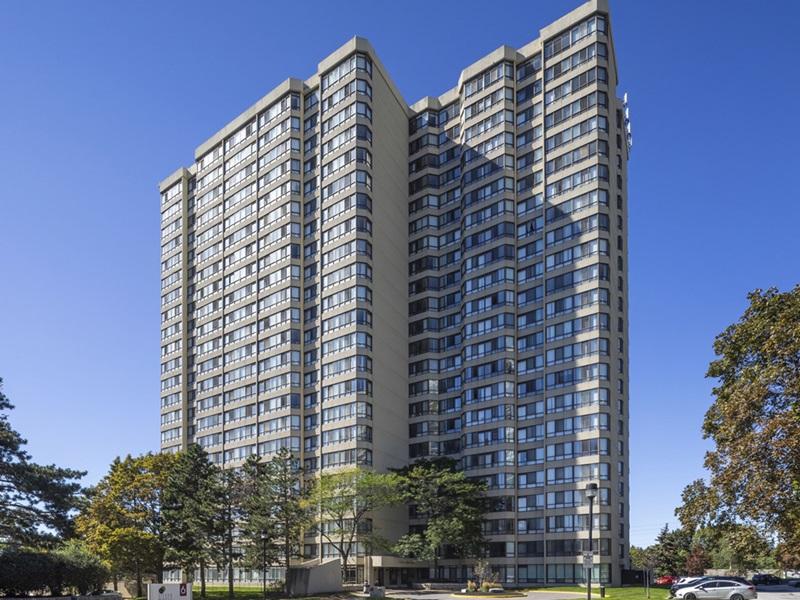
Richard Crenian is the president of ReDev Properties. (Courtesy Redev)
Cheaper land and lower business operating costs are fueling increased demand for commercial real estate and new economic opportunities in smaller Manitoba communities outside of Winnipeg.
Richard Crenian, president of ReDev Properties, noted the trend in a recent blog post. In it, he said many CRE investors “are taking advantage of lower prices in once considered sleeper towns in Manitoba. Investors’ interest has specifically been concentrated on the outskirts of Winnipeg’s Perimeter Highway.”
Crenian also singled out other communities such as Steinbach, Brandon and Portage la Prairie, which have all attracted the interest of big players.
Availability of land and costs are key driving factors in the interest, Crenian told RENX in an interview. The story is similar to what’s happening in other areas of the country such as Balzac just outside of Calgary, municipalities outside Edmonton and many outlying communities in the Greater Toronto Area.
“People are going to all of these small places because it’s about affordability,” said Crenian.
Fees push developers outside Winnipeg borders
Sandy Shindleman, president and CEO of Winnipeg-based Shindico Realty Inc., told RENX impact fees imposed on new city residential development are a major factor causing people to move outside Winnipeg to neighbouring rural municipalities. The fees are intended to offset costs for infrastructure and services such as transit, recreation and leisure facilities.
“The rural municipalities are starting to take advantage of that. There are many house plans in West St. Paul and Headingley, for example.
“The big developers have gone out to these rural municipalities and by and large the public doesn’t even know if it’s the RM (rural municipality) or the city,” Shindleman said. “The lines are pretty blurred.”
Developers and business owners know the differences, and the accommodations extend well beyond the residential sector.
“It’s easier to get subdivisions. It’s pro-business-like to get building permits, occupancy permits,” Shindleman said. “There isn’t a business tax. We’re starting to see this major investment in spec industrial, especially multi-tenant industrial, build-to-suit opportunities.”
Investors entering the markets can find land in the rural municipalities. It’s also easier to purchase and develop the land, Shindleman said.
Opportunities remain in city
Even in the current environment, though, there are still opportunities within the city for industrial development. For example, Shindico is planning a 22-acre development in the St. Boniface Industrial Park on the east side of Winnipeg where there is a shortage of modern, first-class, high-cube, multi-tenant product.
“We are proposing to build 300,000 square feet of that kind of space, but that is on land we already have,” Shindleman said. “We purchased it with zoning. We purchased it with the street in . . . but if we had to go through the hassle of entitling the land, we probably wouldn’t do it.
“Certain tenants still want to be near an employment base, and for those users there will be that new space available. But in the northwest it’s pretty well all going to (the neighbouring community of) Rosser. In the southwest it’s going to Macdonald and Headingley. East St. Paul is getting a fair shake and West St. Paul.”
The one area Shindleman expects to remain strong within the City of Winnipeg is multi-family.
“Multi-family is the flavour of the decade, I think,” he said. “Especially rental accommodation, more than condos.
“The condos have been flat and they’ve mostly been a way of entry into the market for people. So they’re built low-density. A lot of wood-frame condos.”
However, Shindico said his firm is now considering several hundred units of rental product, noting Winnipeg’s economy has remained flat to slightly improving through early 2019.

Sandy Shindleman, president and CEO of Winnipeg-based Shindico Realty Inc. (Courtesy Shindico)
Smaller Manitoba centres on the grow
A lot of development activity is going on outside the city boundaries.
“There’s been a huge amount of investment in Portage la Prairie and Brandon,” Shindleman said. “For the first time . . . there’s over a billion dollars worth of development going on in Portage la Prairie. That’s going to have a lot of ripple effect.”
In Portage la Prairie, Crenian blogged, there are plans to build a $400-million pea protein processing facility and a $460-million potato processing facility. All of this is occurring 45 minutes west of Winnipeg in a city of just 13,300 where $1.2 billion in new investments has been secured.
“This is all great news for retail investors, as all of this investment drives demand for both housing and retail,” Crenian added.
“There are already a number of investors either reinvesting back into their facilities, as in the case of McCain Foods who will be reinvesting $45 million into its own potato processing plant, and Green Sky Labs have plans to finalize its $25-million medicinal cannabis plant in nearby Newton.”
With the new industry come the spinoff benefits.
“Many in the area are optimistic about the economic direction and demand in the area,” Crenian explained. “Several restaurants have announced plans of coming into town, including Popeyes Louisiana Kitchen, Booster Juice and Mr. Mikes Steakhouse, to name a few.
“With hydro rates being competitive and accessible, this will continue to attract data centres, cannabis growers, and even Bitcoin mining.”
New Steinbach business park
Crenian also noted the neighbouring Steinbach North Business Park. The new commercial mixed-use development of retail and offices, on approximately 80 acres of land, broke ground last fall.
The first phase of the business park is expected to open this summer.
“The City of Steinbach taxable assessment on commercial and residential real estate has doubled in eight years from $526 million in 2010 to $939 million in 2018. This alongside a 3.7 per cent annual increase in population due to the migration from the Philippines, other parts of Asia and from Europe has also positively impacted demand,” he said.
“Agriculture has always had a direct effect on this region. However, with manufacturing, retail, pharmaceuticals, and financial services being added to the economic base, the area is expected to be stronger during various economic cycles.”







